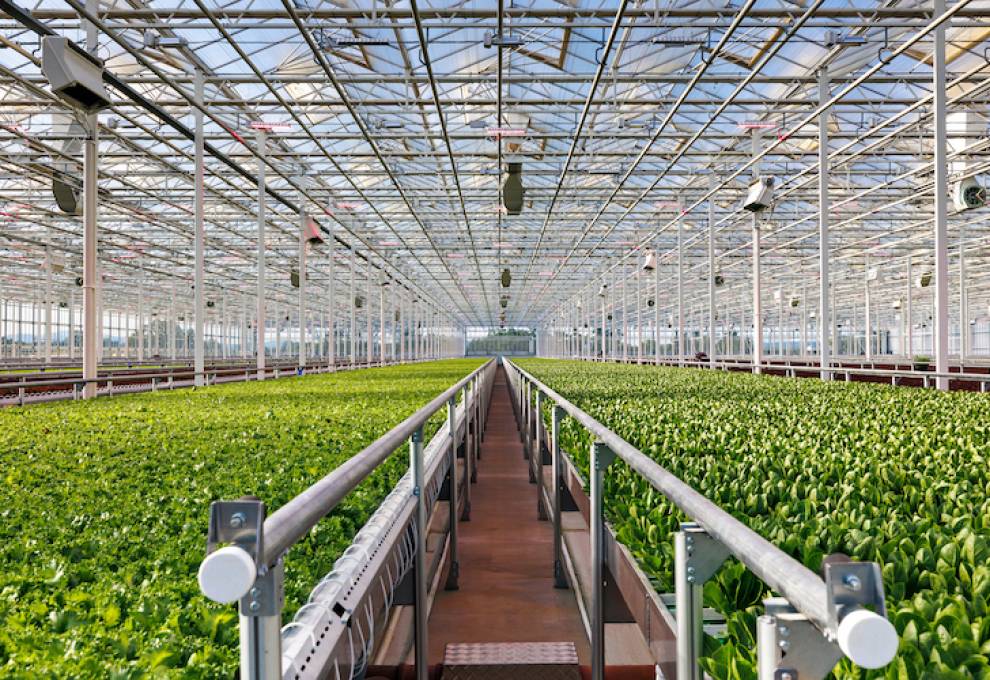
While growth may have eased the last couple years, 2023 numbers for the Canadian greenhouse vegetable sector are still impressive. Reporting last month at the 2024 Fruit and Vegetable Growers of Canada (FVGC) annual general meeting in Ottawa, the Greenhouse Vegetable Working Group, chaired by Linda Delli Santi, tabled some impressive stats. Here are three of the standouts:
- $2.2 billion in farmgate receipts
- $1.4 billion in exports, primarily to the U.S.
- 5,500 acres under glass and poly
Required context here is that last year greenhouse growers produced 36 per cent of the approximately $6 billion total value of Canadian horticultural produce. Given the increasing occurrence of extreme weather events afflicting field growers from coast to coast, the trend to controlled environment agriculture (CEA) will only intensify. With research continuing apace to broaden the array of economically viable greenhouse produce, will raspberries, blackberries, and spinach soon be tilting the scale even further?
At the provincial level, Ontario leads the greenhouse sector with 3,960 acres, most of which is peppers (1,440), followed by cucumbers (1,098) and tomatoes a close third (1,065). Strawberries have quickly expanded to about 400 acres while lettuce rounds out the balance at approximately 200 acres, a number that includes greenhouse, vertical and alternate CEA-grown produce.
The greenhouse vegetable sector was the first to require mandatory independent third-party food safety audits as part of its licensing provisions for members. In 2005 lettuce was granted an exemption by the Ontario Greenhouse Vegetable Growers (OGVG) because risks associated with lettuce-growing practices at that time had the potential to undermine OFVG’s established food safety program. Technology evolves and now, the OGVG will engage in a process that will ultimately lead to asking the Ontario Farm Products Marketing Commission to reverse the original exemption so that lettuce can again be regulated by OGVG. Significantly, in an unrelated move, the Ontario greenhouse strawberry growers have shown interest in having greenhouse strawberries come under OGVG regulatory authority.
Stats for British Columbia reveal that of the 850 acres in production, about half are in peppers and the rest in tomatoes and cucumbers. Interestingly and as a few shrewd observers predicted, acreage originally targeted to service the cannabis market is now being converted to growing vegetables and in some cases to strawberries. This is positive reinforcement as to the strength and durability of the fruit and vegetable sector.
Québec greenhouse agriculture currently totals about 500 acres producing tomatoes (220), cucumbers (150), lettuce (50), peppers (25), and strawberries (20). Perhaps unsurprisingly, remaining acreage is devoted to herbs, no doubt a value-added nod to the French culinary penchant. While down on the ranch, Alberta greenhouses, predominantly located around Medicine Hat, appear steady at 200 acres.
Across the country, greenhouse growers are facing some common obstacles to growth. One such is tomato brown rugose fruit virus (ToBRFV), which continues to challenge growers in British Columbia, Ontario, and Québec. The virus causes misshapen fruit and discolouration. It is difficult to detect and manage because the virus is stable and easily transmitted by mechanical means. Although some ToBRFV-tolerant varieties have become available, growers note deficits in yield, fruit size and flavour.
The “rugose” as it’s referred to, is also causing havoc with international trade. In late 2019, the U.S.-based Animal and Plant Health Inspection Services (APHIS) restricted imports of tomato and pepper seed lots, transplants, and fruit from all countries where the rugose virus exists. There is some hope for change as part of an amended Federal Order in 2024, following the APHIS consultation on its draft Pest Risk Assessment in August 2023. Meanwhile, ToBRFV-related import restrictions continue to delay and interrupt shipments.
As for municipal obstacles, bylaws such as stormwater taxes, permitting and housing regulations in Ontario are continuing to add tens of thousands of dollars to development and operating costs. As Richard Lee, executive director, OGVG, explains, “We now have a new standard established by the Municipality of Chatham-Kent whereby development fees for water and wastewater were adopted by council in mid-March that will cost a greenhouse grower $179,000 per acre in 2024.” Adding that “These fees will gradually escalate until 2029 at which time it will cost $366,000 per acre before a shovel enters the ground.”
Growers question the viability of future expansion plans without partnerships at the municipal, provincial, and federal level for access to electricity, natural gas, and transportation infrastructure. As one Ontario grower observed, “We are already seeing the flight of investment to the U.S.”
The greenhouse sector continues to advocate for business-friendly policies and support from all levels of government so the industry can maintain the economic contributions it makes to rural communities. Putting weight to words, it has established the Canadian Greenhouse Excellence Network to provide evidence-based guidance for these complex issues.
In fields and greenhouses alike, today’s economic and environmental pressures put agricultural necessities such as water, energy, land, capital, and labour at risk. Strong national and regional associations, voicing concerns in unison on behalf of growers, can help to reduce some of that risk. Because growing more food is not just good for Canadians, it’s good for Canada.


Add new comment